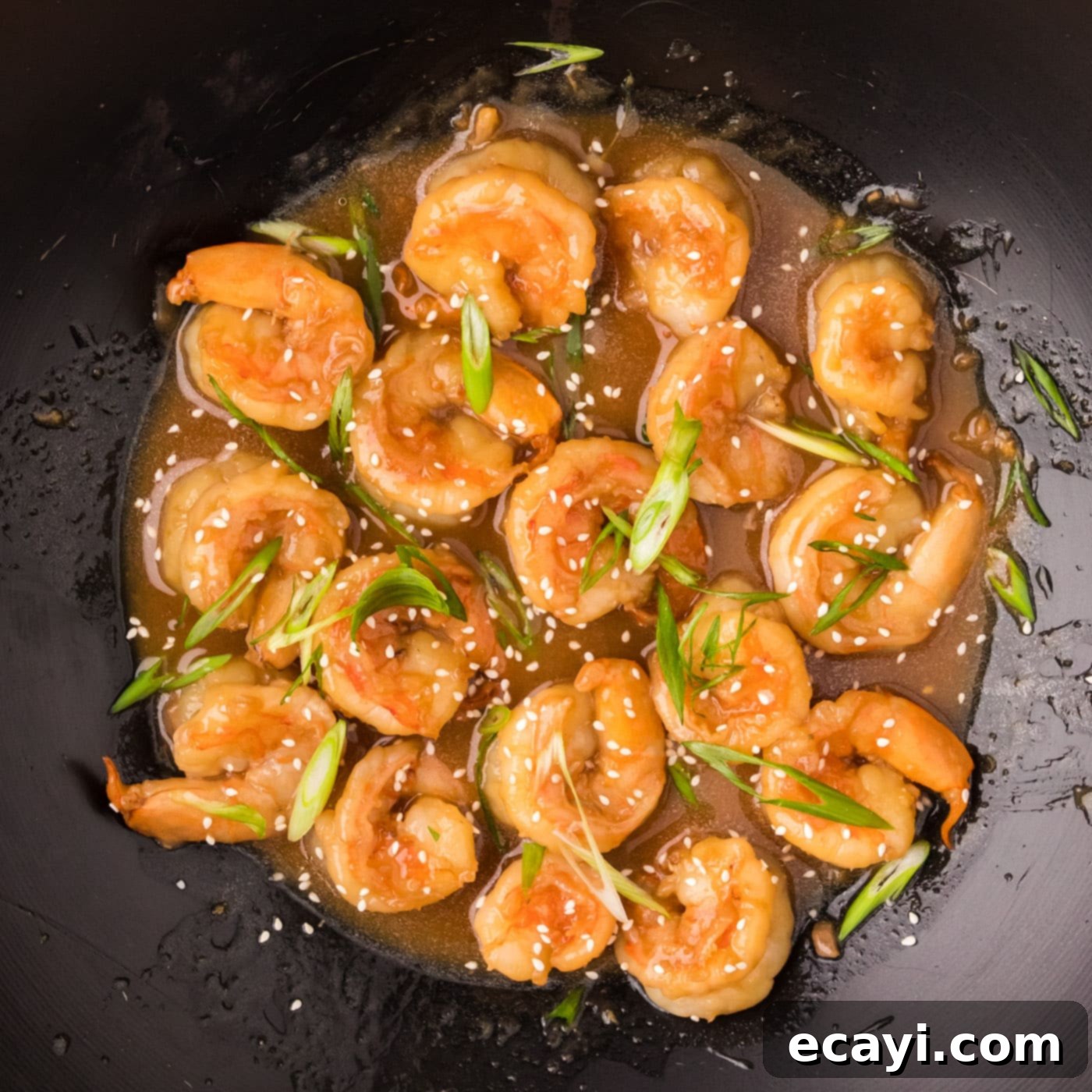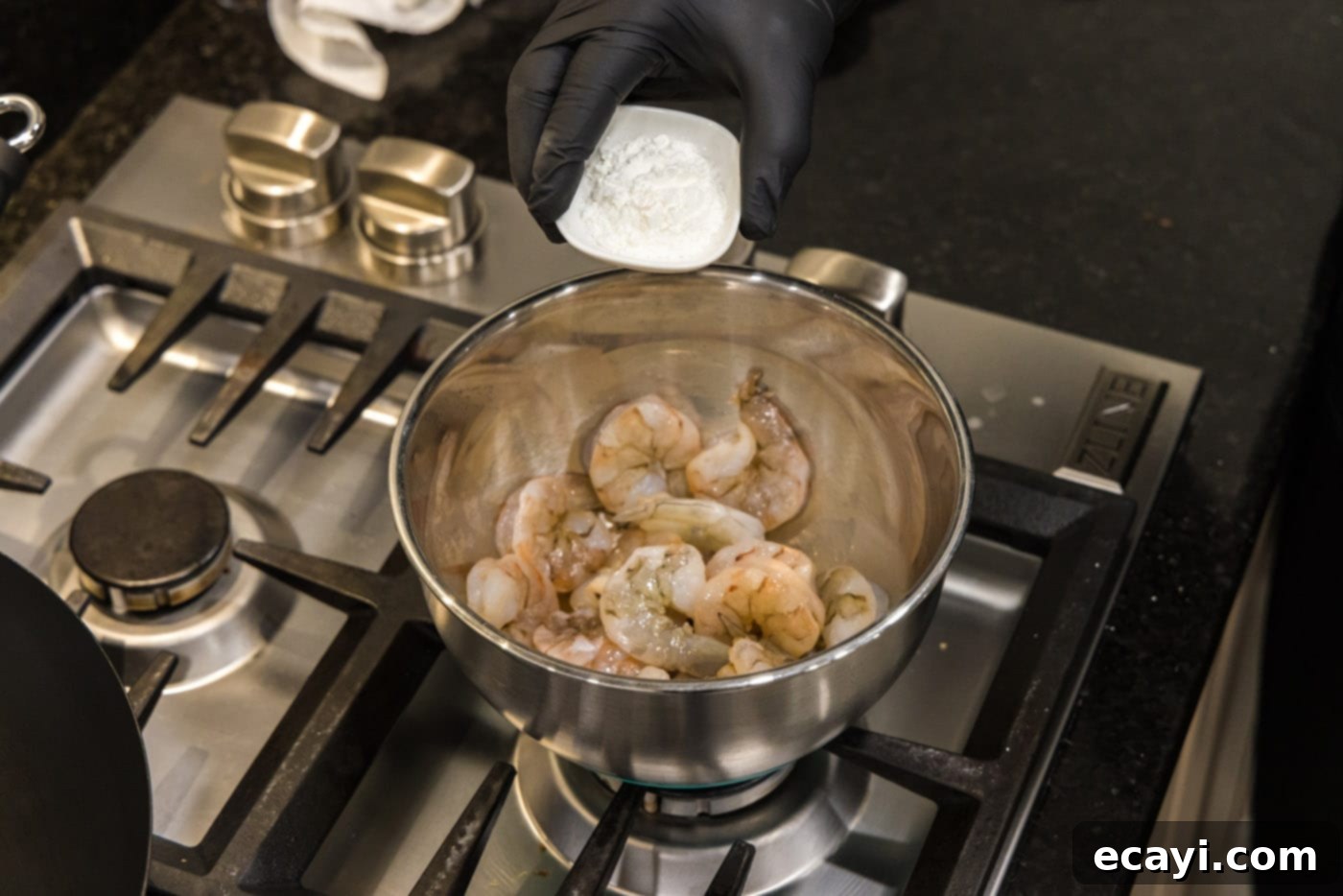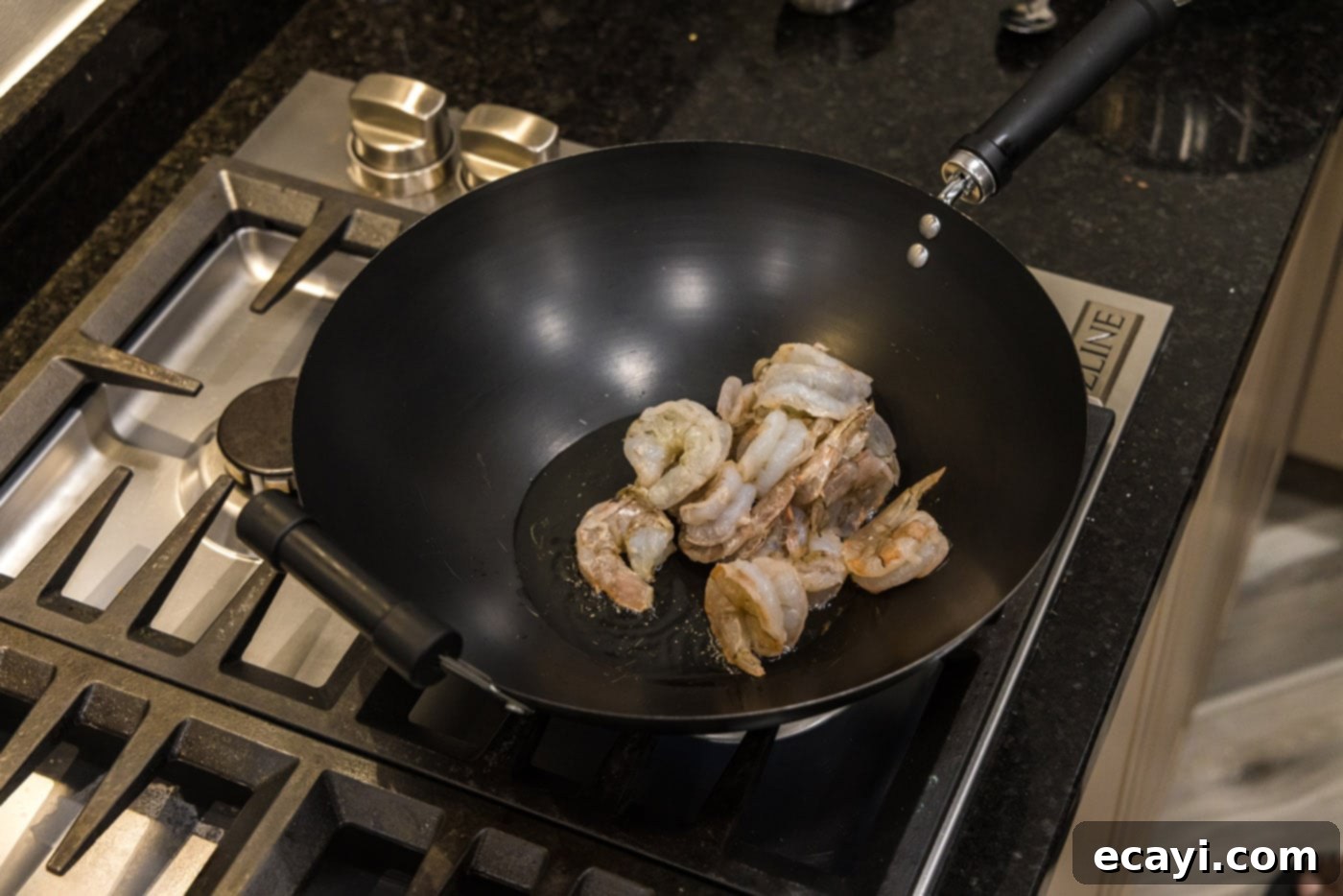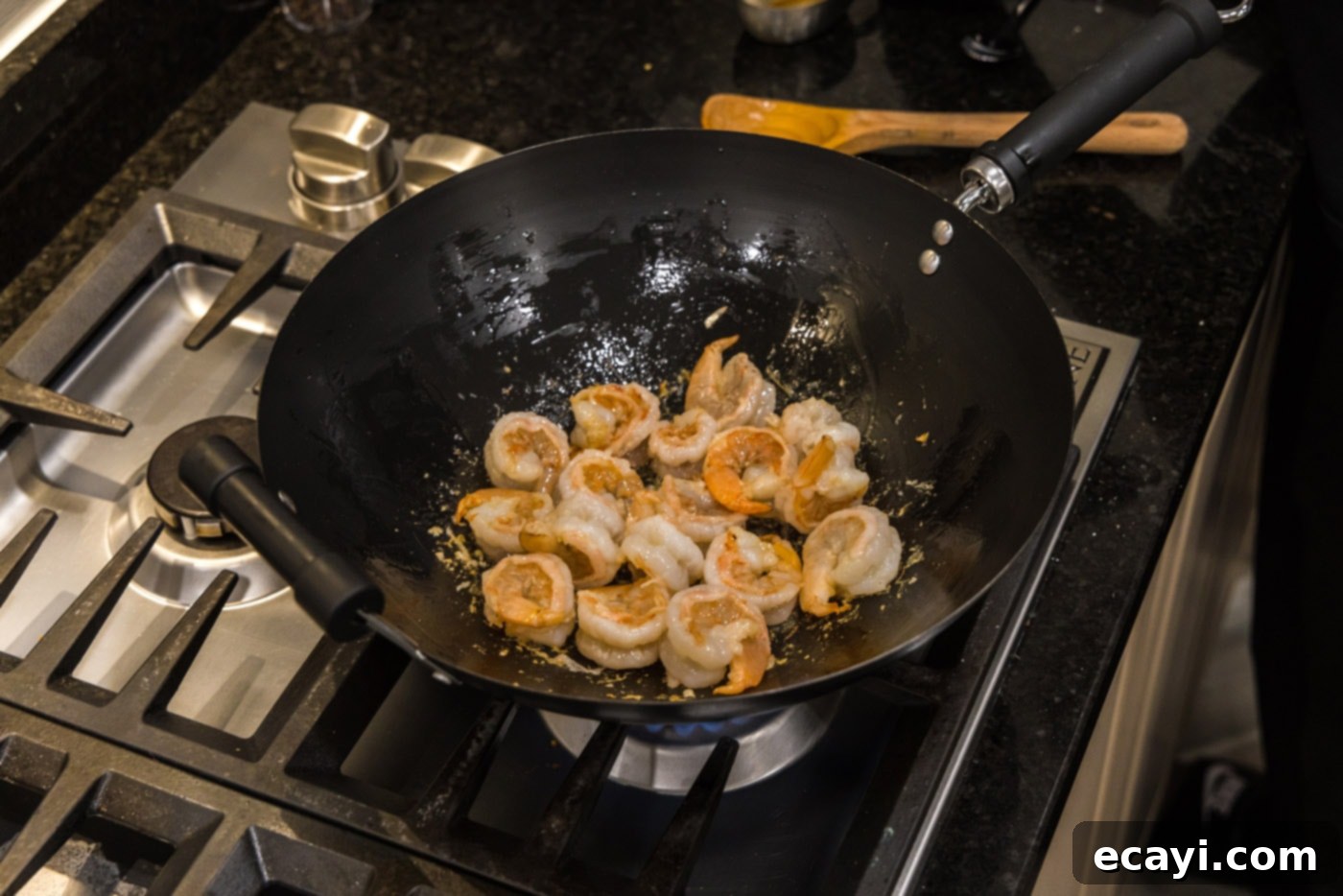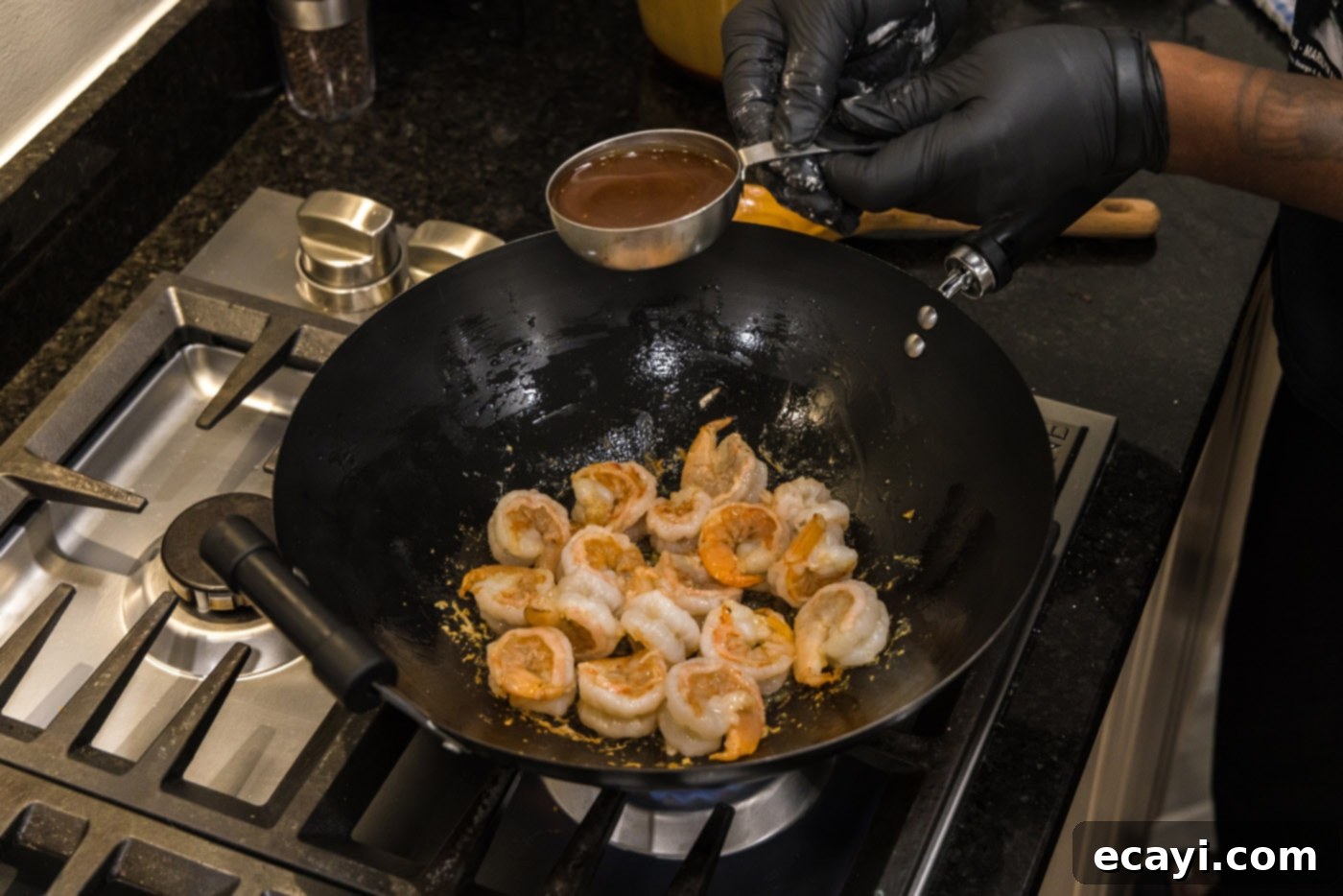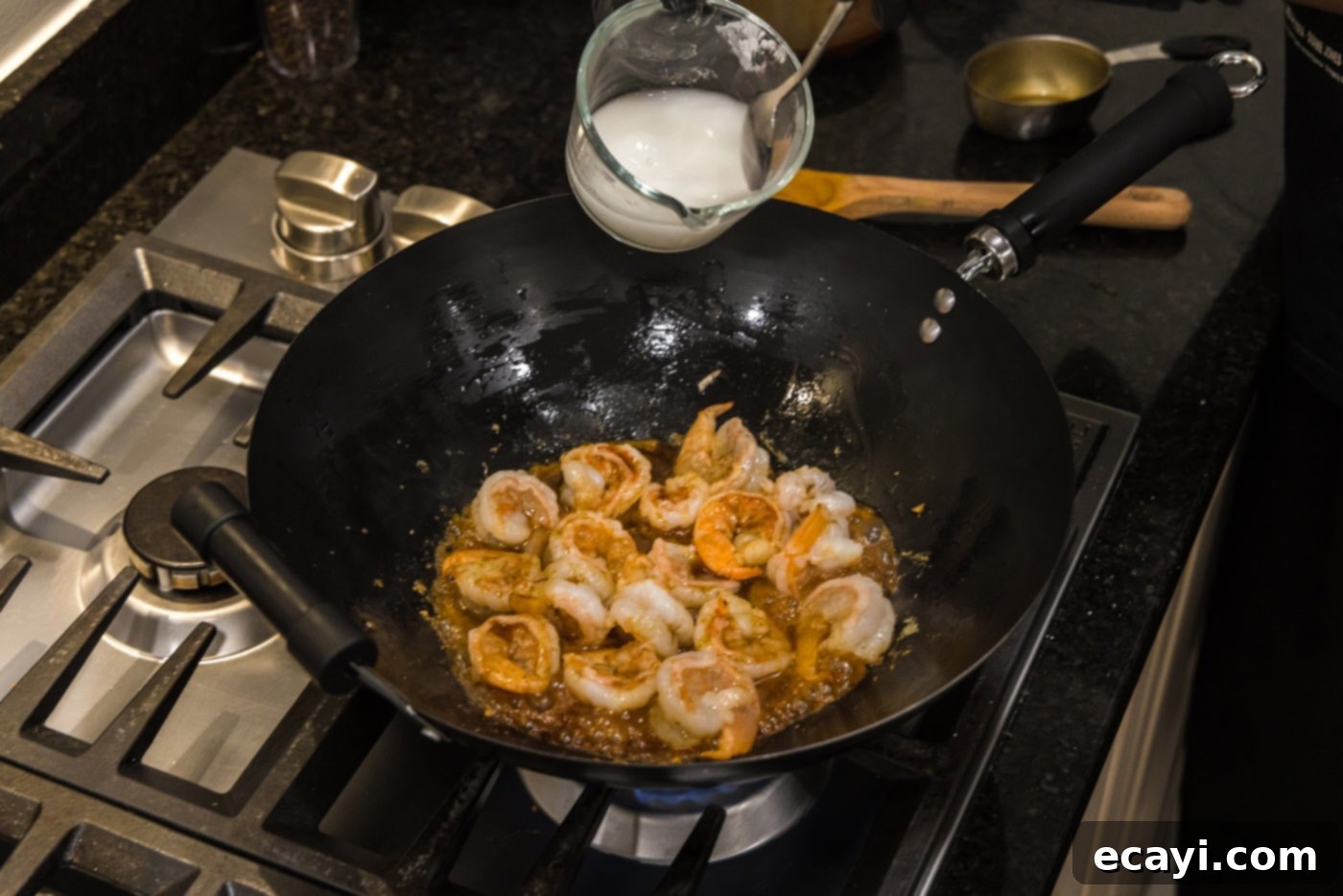Effortless 15-Minute Teriyaki Shrimp: Your Go-To Sweet & Savory Stir-Fry Recipe
Prepare to tantalize your taste buds with this incredibly easy and unbelievably flavorful Teriyaki Shrimp recipe! Featuring plump, succulent shrimp stir-fried to perfection and coated in a rich, tangy, and homemade teriyaki sauce, this dish comes together in just 15 minutes. It’s an ideal choice for busy weeknights when you crave something deeply satisfying and bursting with sweet and savory notes without spending hours in the kitchen.
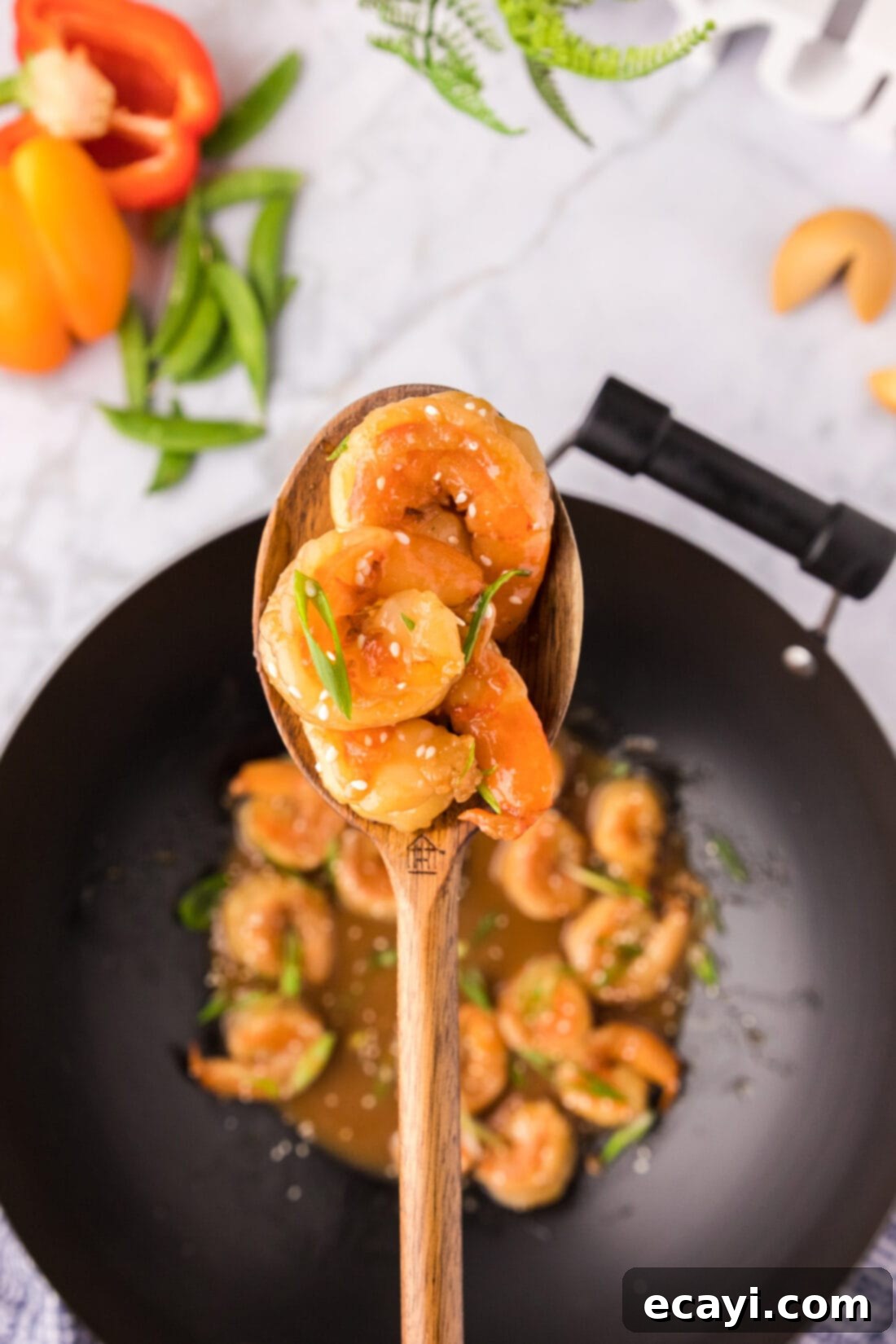
Why This Easy Teriyaki Shrimp Recipe Will Be Your New Favorite
This teriyaki shrimp recipe isn’t just another dinner; it’s a culinary triumph that brings together a symphony of flavors in record time. The moment the tangy, salty, and sweet notes of the homemade teriyaki sauce embrace the perfectly cooked shrimp, a magical transformation occurs right in your skillet. This isn’t just about quick cooking; it’s about crafting a meal with incredible depth and complexity, making it an absolute win for any occasion, especially those frantic weeknights.
One of the standout features of this dish is its remarkable speed. From prep to plate, you’re looking at approximately 15 minutes, making it faster than ordering takeout and infinitely more delicious and customizable. We love to emphasize fresh ingredients and vibrant flavors, ensuring that every bite delivers a punch of goodness that will keep you coming back for more.
Beyond its speed and incredible taste, this teriyaki shrimp offers fantastic versatility. If you opt to use our acclaimed homemade teriyaki sauce, you’ll likely have some delightful leftovers. Don’t let them go to waste! The remaining sauce is perfect for whipping up complementary dishes like our popular teriyaki noodles, which happens to be our favorite way to serve this shrimp. Imagine a delicious, cohesive meal where components effortlessly transition from one dish to the next – talk about an easy two-in-one dinner strategy! This recipe is a testament to how simple ingredients can create extraordinary meals, proving that gourmet flavors are well within reach, even on your busiest days.
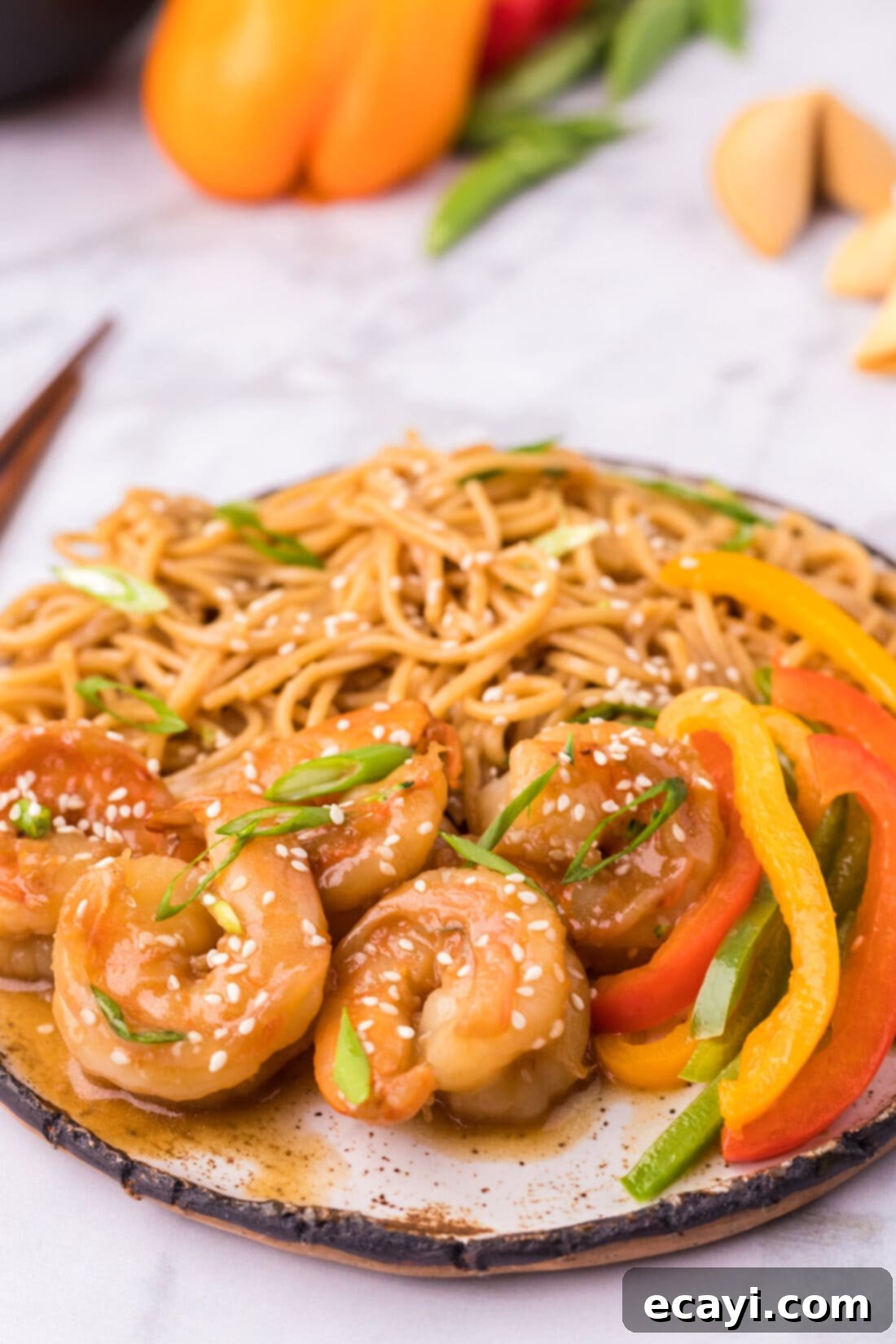
Essential Ingredients for Perfect Teriyaki Shrimp
Gathering your ingredients is the first step towards creating this delightful teriyaki shrimp masterpiece. The beauty of this recipe lies in its simplicity and the use of fresh, accessible components that come together to form an unforgettable meal. Ensure you have everything ready before you start cooking, as the process moves quickly! You’ll find all precise measurements, a complete list of ingredients, and detailed instructions in the printable recipe card located at the end of this post.
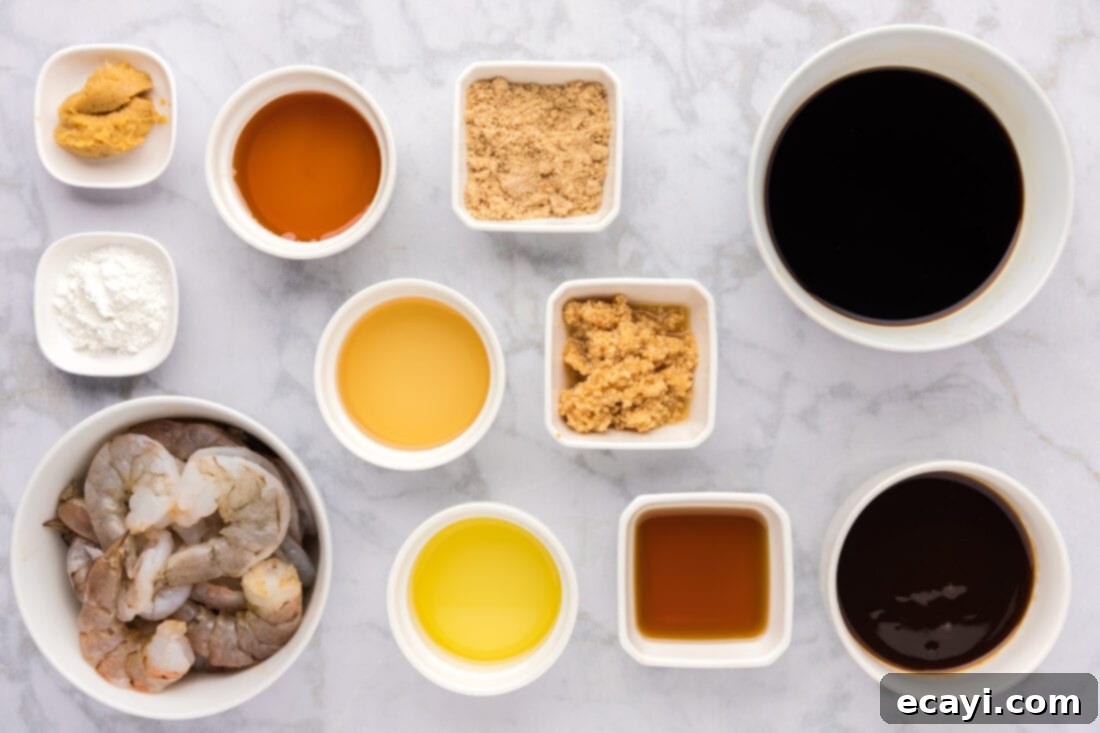
Ingredient Insight & Clever Substitutions for Your Shrimp Stir-Fry
Understanding your ingredients and knowing when and how to make substitutions can elevate your cooking experience. Here’s a closer look at the key components of this teriyaki shrimp recipe:
SHRIMP – The star of our dish! While we recommend “grilling shrimp” for their robust size and texture, you can certainly use large or extra-large shrimp. The key is to choose shrimp that are firm and fresh. We strongly advise against using pre-cooked shrimp for this recipe, as they tend to become rubbery and lack the ability to fully absorb the delicious teriyaki flavors during the stir-frying process. If you’re using frozen shrimp, which is perfectly acceptable and often more convenient, remember to thaw them completely before starting. The best way to thaw shrimp is by placing them in a bowl of cold water for about 15-20 minutes, or overnight in the refrigerator. Once thawed, pat them thoroughly dry with paper towels. Excess moisture can prevent proper searing and dilute the sauce. For best results, ensure your shrimp are peeled and deveined, with tails removed, unless you prefer to keep the tails on for presentation.
TERIYAKI SAUCE – This is where the magic truly happens! We personally love using 1/2 cup of our signature Homemade Teriyaki Sauce. We often prepare this sauce in larger batches and store it in the refrigerator for quick use in various dishes. Making your own teriyaki sauce allows for complete control over the flavor profile, enabling you to adjust the sweetness, saltiness, and tang to your personal preference. It’s typically a blend of soy sauce, mirin (sweet rice wine), sake (rice wine), brown sugar or honey, fresh ginger, and garlic. The depth of flavor in a homemade sauce is unparalleled compared to many store-bought varieties, which can sometimes be overly sweet or high in sodium. However, if time is a constraint, a good quality store-bought teriyaki sauce can be used. Just be sure to check the ingredient list for unnecessary additives and aim for a low-sodium option if possible. Don’t worry if you don’t have our homemade sauce on hand; we’ve included the specific measurements for preparing the appropriate amount of teriyaki sauce from scratch directly within the recipe card below.
CORNSTARCH & WATER – These humble ingredients play a crucial role. Cornstarch is used in two ways: first, to lightly coat the shrimp, which helps create a beautiful, slightly crispy exterior when stir-fried and allows the sauce to adhere better. Second, mixed with water to form a “slurry,” it’s added to the sauce to thicken it to that perfect glossy consistency that coats the shrimp beautifully, ensuring every bite is rich with flavor.
OLIVE OIL – Essential for stir-frying. Use a good quality olive oil or another neutral high-heat oil like vegetable or canola oil to achieve a nice sear on the shrimp without overpowering the delicate teriyaki flavors.
Mastering Your 15-Minute Teriyaki Shrimp: Step-by-Step Guide
These step-by-step photos and detailed instructions are provided to help you visualize each stage of making this incredibly delicious and quick teriyaki shrimp recipe. For your convenience, you can Jump to Recipe to access the full printable version of this recipe, complete with precise measurements and comprehensive instructions at the bottom of this page.
- In a large bowl, toss your prepared shrimp with cornstarch. This light coating is vital for two reasons: it helps to create a delicate, slightly crispy exterior on the shrimp when stir-fried, and it provides a surface for the teriyaki sauce to cling to, ensuring maximum flavor in every bite. Make sure each shrimp is evenly coated.

- If you’re making the teriyaki sauce from scratch, combine all the sauce ingredients (low sodium soy sauce, sesame oil, oyster sauce, honey, rice vinegar, chopped ginger, minced garlic, and brown sugar) in an immersion blender and blend until the mixture is completely smooth. This ensures all the aromatic ingredients are fully integrated, creating a uniform and deeply flavorful sauce.
TIP – Alternatively, for ultimate convenience and consistency, you can simply use 1/2 cup of our pre-made and delicious homemade teriyaki sauce if you have it on hand.
- Heat olive oil in a wok or a large skillet over medium-high heat. Allow the oil to get hot, but be careful not to let it smoke, as this indicates it’s too hot and can burn the oil and food. Once shimmering, add the cornstarch-coated shrimp to the hot wok. Stir-fry for approximately 2 minutes. Shrimp cooks very quickly, and you’ll know they’re done when they curl into a C-shape and turn opaque with beautiful pink and red hues. Avoid overcooking, as this can lead to tough, rubbery shrimp.


- Once the shrimp are cooked through, pour the prepared teriyaki sauce directly into the wok with the shrimp. Simultaneously, in a small separate bowl, quickly whisk together 1/4 cup of water with 1 Tablespoon of cornstarch to create a smooth slurry. Immediately add this cornstarch slurry to the wok. The slurry is essential for thickening the sauce, giving it that luxurious, glossy texture that perfectly coats the shrimp.


- Reduce the heat to low and allow the mixture to gently simmer. As it simmers, the cornstarch will activate and thicken the sauce. Stir occasionally to ensure even thickening and to prevent sticking. Continue simmering until the sauce reaches your desired thickness – it should be glossy and coat the back of a spoon. Once thickened, immediately turn off the heat to prevent the shrimp from becoming overcooked or the sauce from becoming too dense. Serve your delicious teriyaki shrimp hot and enjoy!
Frequently Asked Questions & Expert Tips for Teriyaki Shrimp
To maintain freshness and flavor, store any leftover teriyaki shrimp in an airtight container. Keep it refrigerated for a maximum of 2-3 days. When ready to enjoy again, reheat gently in a skillet over low heat to prevent the shrimp from drying out or becoming rubbery. You can also microwave on medium power, stirring occasionally, until just warmed through.
Shrimp cooks incredibly fast, making it easy to overcook. You’ll know your shrimp is perfectly cooked when it curls into a distinct “C” shape and turns opaque throughout with vibrant pink and red hues on the outside. If shrimp forms a tight “O” shape, it’s likely overcooked, resulting in a tough, rubbery texture and a grayish-white color. Keep a close eye on them – usually, 1-2 minutes per side is all it takes depending on size.
Absolutely! Adding vegetables is a fantastic way to boost the nutritional value and make it a more complete one-pan meal. Popular choices include broccoli florets, sliced bell peppers (red, yellow, or orange for color), snap peas, shredded carrots, or thinly sliced zucchini. Add harder vegetables like broccoli or carrots a few minutes before the shrimp so they have time to soften slightly. Softer vegetables like bell peppers or snap peas can be added with the shrimp, or even slightly after, to maintain their crispness.
If you enjoy a bit of heat, there are several easy ways to spice up your teriyaki shrimp. You can add a pinch of red pepper flakes along with the other sauce ingredients, or stir in a teaspoon or two of Sriracha or your favorite chili garlic sauce to the teriyaki sauce before adding it to the wok. For a fresh kick, a few slices of fresh jalapeño or serrano pepper can be stir-fried with the shrimp for the last minute or two of cooking.
To achieve that desirable crispy exterior, start by thoroughly patting your shrimp dry before coating them in cornstarch. Any excess moisture will steam the shrimp instead of searing it. Also, ensure your wok or skillet is very hot before adding the shrimp and avoid overcrowding the pan. Cook in batches if necessary to maintain high heat and allow each shrimp to make direct contact with the hot surface for a good sear.
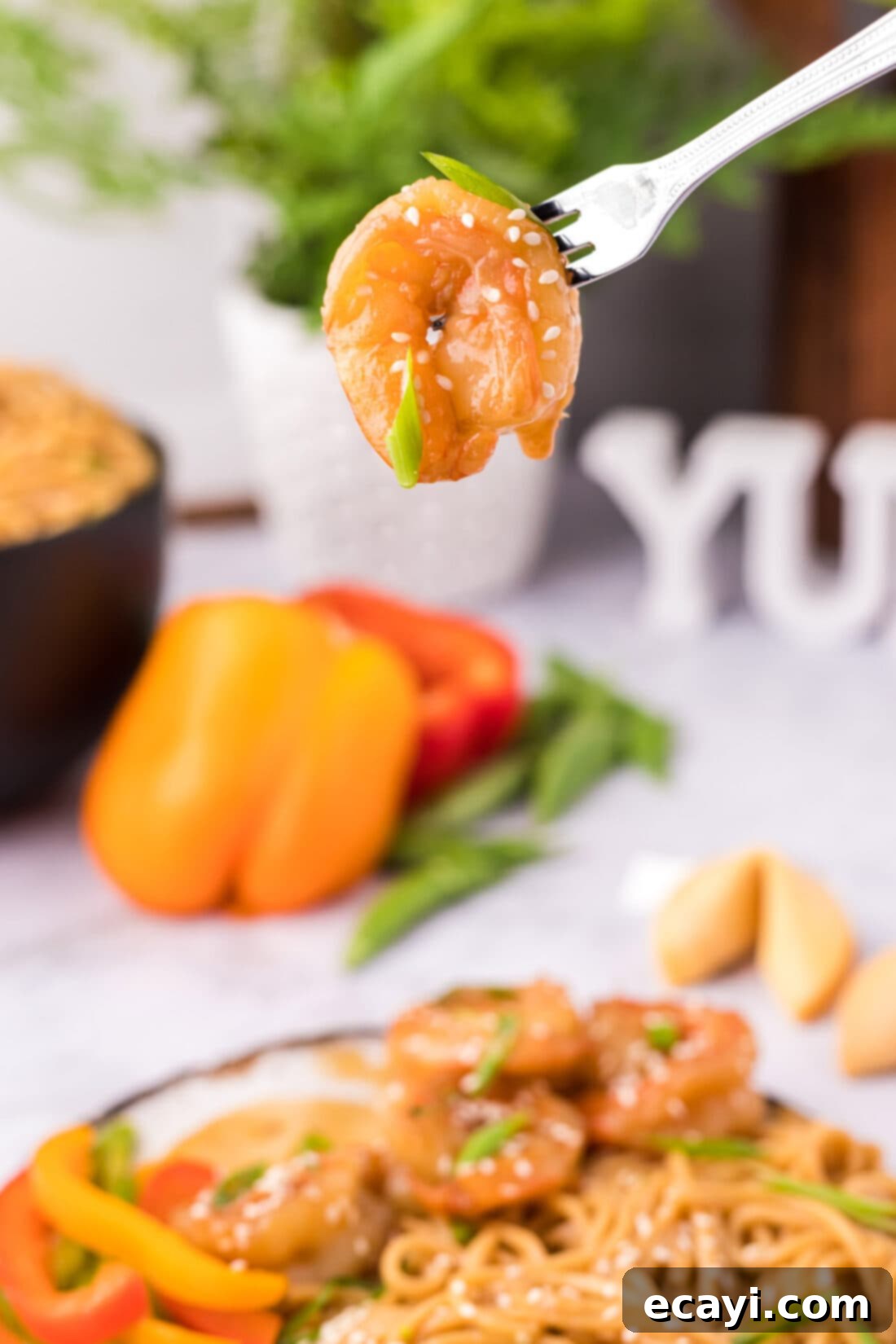
Delightful Serving Suggestions for Teriyaki Shrimp
This versatile teriyaki shrimp dish pairs wonderfully with a variety of sides, allowing you to create a complete and satisfying meal that suits any preference. For a classic Asian-inspired dinner, serve your glistening teriyaki shrimp with a bed of fluffy white rice, such as jasmine or basmati. Alternatively, opt for brown rice for a healthier, nutty complement, or even a flavorful fried rice for extra indulgence.
As mentioned earlier, our teriyaki noodles are an absolute must-try accompaniment, creating a harmonious and cohesive flavor profile. Beyond noodles and rice, consider adding a vibrant array of stir-fried vegetables like crisp broccoli florets, colorful bell peppers, tender snow peas, or thinly sliced carrots for added texture and nutrients. For an extra layer of crunch and flavor, generously garnish your finished dish with toasted sesame seeds and freshly slivered green onions (scallions). A sprinkle of fresh cilantro can also add a refreshing touch. This combination promises a delicious and well-rounded meal every time.
Explore More Delicious Teriyaki Recipes
If you’ve fallen in love with the irresistible flavors of teriyaki, you’re in luck! This versatile sauce can transform a variety of proteins and dishes into extraordinary meals. Here are some of our other favorite teriyaki recipes that we’re sure you’ll enjoy:
- Beef Teriyaki
- Teriyaki Salmon
- Teriyaki Chicken
- Teriyaki Chicken and Rice
I love to bake and cook and share my kitchen experience with all of you! Remembering to come back each day can be tough, that’s why I offer a convenient newsletter every time a new recipe posts. Simply subscribe and start receiving your free daily recipes!
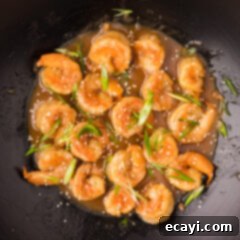
Teriyaki Shrimp
IMPORTANT – There are often Frequently Asked Questions within the blog post that you may find helpful. Simply scroll back up to read them!
Print It
Pin It
Rate It
Save ItSaved!
Ingredients
- 1 pound raw grilling shrimp peeled and tail shells removed
- 2 Tablespoons olive oil
- 1 Tablespoon cornstarch
- ¼ cup water
Teriyaki Sauce
- ¼ cup low sodium soy sauce
- 1 Tablespoon sesame oil
- 2 Tablespoons oyster sauce
- 1 Tablespoon honey
- ¾ Tablespoon rice vinegar
- ¾ Tablespoon chopped ginger
- ½ Tablespoon minced garlic
- ¾ teaspoon brown sugar
Things You’ll Need
-
Wok
-
immersion blender
-
Vinyl gloves
Before You Begin
- If you can’t find grilling shrimp, you can use large or extra-large shrimp. I wouldn’t recommend precooked shrimp for this recipe. Frozen shrimp will work but you will need to thaw it fully and pat it dry before beginning.
- We used 1/2 cup of our Homemade Teriyaki Sauce which we make in larger batches and keep in the refrigerator. You can do the same and have extra on hand, or we have provided you with the measurements above for the appropriate amount of sauce for this recipe.
- Store leftovers in an air-tight container kept in the refrigerator for up to 2-3 days. Reheat in a skillet over low heat.
Instructions
-
In a large bowl, toss shrimp with cornstarch.
-
Combine all sauce ingredients in an immersion blender and blend until smooth.
-
Add olive oil to wok over medium-high heat until hot, but not smoking. Add shrimp and stir fry for 2 minutes.
-
Add sauce to the shrimp in the wok. Mix cornstarch with water to make a slurry. Add cornstarch mixture to the wok.
-
Turn heat down to low and simmer to thicken. When sauce thickens, turn off heat.
Nutrition
The recipes on this blog are tested with a conventional gas oven and gas stovetop. It’s important to note that some ovens, especially as they age, can cook and bake inconsistently. Using an inexpensive oven thermometer can assure you that your oven is truly heating to the proper temperature. If you use a toaster oven or countertop oven, please keep in mind that they may not distribute heat the same as a conventional full sized oven and you may need to adjust your cooking/baking times. In the case of recipes made with a pressure cooker, air fryer, slow cooker, or other appliance, a link to the appliances we use is listed within each respective recipe. For baking recipes where measurements are given by weight, please note that results may not be the same if cups are used instead, and we can’t guarantee success with that method.
